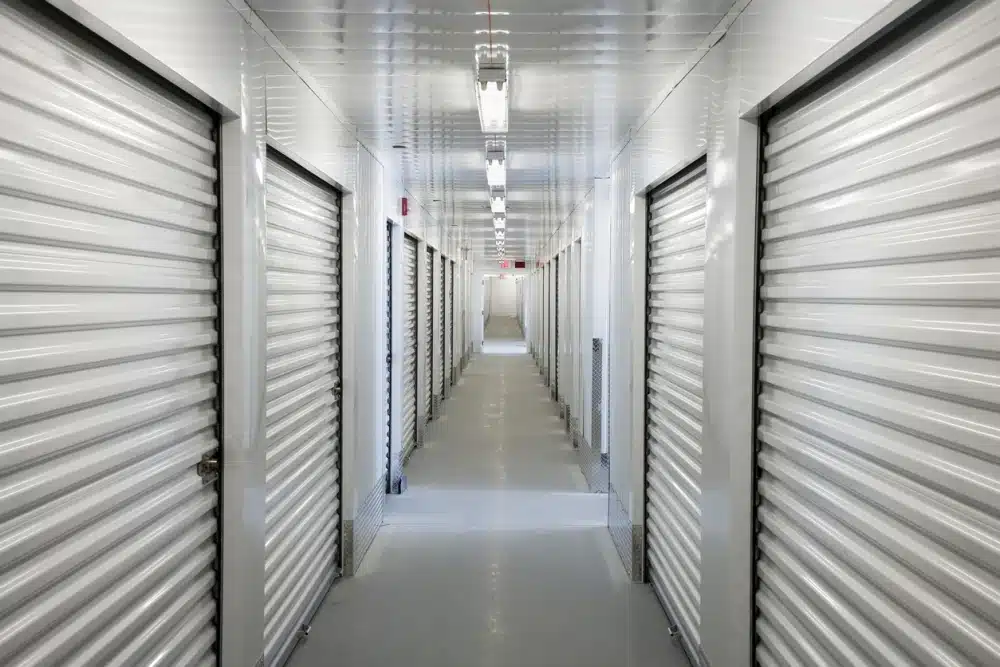Self-Storage Units: A Lucrative Real Estate Investment
Investing in self-storage units has emerged as a highly profitable and resilient sector within the real estate market.


Investing in self-storage units has emerged as a highly profitable and resilient sector within the real estate market. The demand for storage space remains consistently high as people and businesses alike seek convenient and secure locations to store their belongings. This guide will delve into the benefits, considerations, and strategies for investing in self-storage facilities.
Understanding Self-Storage Investments
Self-storage units are spaces rented out to individuals or businesses on a short-term basis, typically month-to-month. These units come in various sizes and can be used to store anything from household items and furniture to business inventory and equipment. The self-storage industry has shown remarkable growth over the years, driven by lifestyle changes, urbanization, and the need for additional space.
Benefits of Investing in Self-Storage Units
- Steady Income Stream: Self-storage facilities generate consistent revenue through rental fees. This income stream is relatively stable, as storage units are often in demand regardless of economic conditions.
- High Demand: The need for storage space is driven by various factors such as moving, downsizing, home renovations, and business needs. This ensures a continuous demand for storage units.
- Low Maintenance Costs: Compared to other types of real estate investments, self-storage facilities typically have lower maintenance costs. Units are often simple structures requiring minimal upkeep.
- Scalability: Investors can start with a small facility and gradually expand as demand grows. This scalability allows for manageable growth and investment.
- Diverse Tenant Base: Self-storage facilities cater to a wide range of customers, from individuals to businesses. This diversity reduces reliance on a single type of tenant, spreading risk.
- Tax Benefits: Investors in self-storage units can benefit from various tax deductions, including depreciation, maintenance expenses, and interest on loans.
Key Considerations for Self-Storage Investments
- Location: The success of a self-storage facility largely depends on its location. Look for areas with high population density, limited competition, and easy access. Proximity to residential neighborhoods, commercial areas, and major highways can enhance occupancy rates.
- Market Research: Conduct thorough market research to understand the local demand for storage units. Analyze competitors, occupancy rates, rental rates, and potential barriers to entry in the market.
- Facility Design and Security: Invest in a well-designed facility with modern amenities and robust security features. Climate-controlled units, advanced surveillance systems, and secure access controls can attract more customers.
- Regulatory Compliance: Ensure that your facility complies with local zoning laws, building codes, and other regulatory requirements. Obtain all necessary permits and licenses before starting operations.
- Operational Efficiency: Implement efficient management practices to minimize operational costs. This includes automating administrative tasks, optimizing staffing levels, and using technology for customer management and payment processing.
- Marketing Strategy: Develop a strong marketing strategy to attract tenants. Utilize online marketing, local advertising, and partnerships with moving companies and real estate agents to increase visibility and occupancy rates.
Steps to Get Started with Self-Storage Investments
- Research and Education: Educate yourself about the self-storage industry, market trends, and investment strategies. Attend industry conferences, read books, and network with experienced investors.
- Create a Business Plan: Develop a detailed business plan outlining your investment goals, target market, financial projections, and operational strategy. This plan will guide your decision-making and attract potential investors or lenders.
- Secure Financing: Obtain financing for your self-storage investment. Explore options such as traditional bank loans, SBA loans, and private investors. Ensure you have a solid financial plan to support your investment.
- Select a Location: Identify a suitable location for your self-storage facility. Conduct a feasibility study to assess the potential for success in the chosen area. Consider factors such as competition, demand, and accessibility.
- Purchase or Build the Facility: Decide whether to purchase an existing facility or build a new one. Each option has its advantages and challenges. Purchasing an existing facility may offer immediate cash flow while building a new one allows for customization.
- Renovate and Equip: If you purchase an existing facility, consider renovating it to meet modern standards and attract more customers. Invest in security systems, climate control, and other amenities to enhance the facility’s appeal.
- Market Your Facility: Launch a comprehensive marketing campaign to promote your self-storage units. Utilize online platforms, social media, and local advertising to reach potential tenants. Highlight the unique features and benefits of your facility.
- Manage Efficiently: Implement efficient management practices to ensure smooth operations. Use property management software to streamline administrative tasks, track occupancy rates, and manage customer interactions.
Real-Life Success Stories
- Urban Expansion: Jane invested in a self-storage facility located in a rapidly growing urban area. By offering a mix of standard and climate-controlled units, she attracted a diverse tenant base. Her facility maintained high occupancy rates, generating a steady income stream and significant returns on investment.
- Rural Revitalization: Mark purchased a rundown self-storage facility in a rural town experiencing economic revitalization. He renovated the property, upgraded security features, and marketed it to local businesses and residents. The facility quickly became the go-to storage solution in the area, resulting in increased rental income and property value.
Conclusion
Investing in self-storage units can provide a lucrative and steady income stream with relatively low maintenance costs. The consistent demand for storage space, combined with the scalability and diverse tenant base, makes self-storage a resilient and attractive investment option. By carefully selecting locations, conducting thorough market research, and implementing efficient management practices, investors can achieve significant returns and build long-term wealth through self-storage investments. Whether you’re a seasoned investor or just starting, exploring the self-storage market can offer valuable opportunities for financial growth and stability.